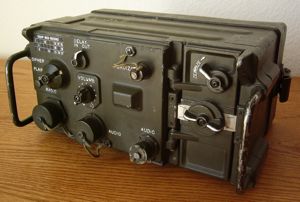
The KY-38 is the manpack variant of the NESTOR family of voice security devices. Used during the Vietnam War, this family included the KY-8 vehicular unit, the KY-28 aircraft unit, and the KY-38 manpack unit. These devices permitted secure voice communications over radio.
This particular unit has been demilitarized; that is, all of the cryptographic hardware has been removed from the unit before it was released as surplus, leaving only the case, power supply, interface circuitry, and an interesting electromechanical keying device. The battery box is also missing.
The cryptographic key is entered with a KYK-38 keyfill device (which I do not have). Opening the small door on the front panel of the KY-38 reveals a collection of holes. Two large holes allow long pins on the KYK-38 keyfill device to set the spring-loaded mechanical zeroizing mechanism inside the KY-38, and 64 smaller holes allow the keying switches to be set by corresponding pins on the KYK-38. Behind each of the small holes is a multi-position slide switch which can be set to any of a number of positions by inserting a metal pin into its hole to the correct depth. The switches are all reset to their initial positions (closest to the front panel) by the mechanical zeroizing mechanism.
The zeroizing mechanism’s powerful springs are cocked while entering the desired key, and the mechanism is then armed once the front panel door is closed. The springs are released when the door is opened, the manual zeroize knob is turned, or an electrical zeroize signal is applied through a connector on the front panel. Once released, the springs return all of the keying switches to their initial positions, thus erasing the entered cryptographic key.
While the actual cryptographic hardware has been removed from this unit, the electromechanical keying unit is still present and operational.
Pictures
Here are lots of pictures of my demilitarized KY-38. Click on the thumbnail pictures to see (much!) larger versions.
| Here are some views of the front panel. The “RADIO” knob locks into each of its three positions, and the small round latch at its left edge must be pulled before the knob can be rotated. Each position is color-coded. Note the presence of audio jacks for two different radio generations, since older equipment like the AN/PRC-10 was still in use, but it was starting to be replaced by newer equipment like the AN/PRC-25.
Notice the metal pin in the crooked slot near the upper right corner, when the keying door is open. Once the zeroizing mechanism’s springs have been cocked, pressing this pin arms the zeroizing mechanism, and releasing the pin zeroizes the unit. A pin on the back of the zeroize knob presses the pin in the crooked slot when the door is closed. Either opening the door or turning the zeroize knob releases pressure from the pin in the crooked slot, thus zeroizing the unit. The slot is shaped to prevent the door from closing if the zeroize knob is turned while trying to close the door, so that the door cannot be closed without arming the zeroizing mechanism. The four phillips screws behind the door must be removed in order to hinge the internal chassis open, so the unit must be zeroized before it can be disassembled. A determined enemy with knowledge of the zeroizing mechanism could probably still defeat the mechanism on a captured unit in order to read out the keying switch settings, though. |
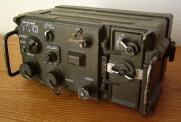
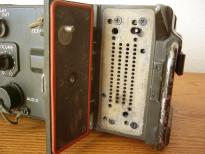


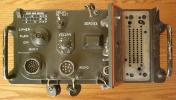
Here is the rear of the unit (minus the missing battery box), and the unit removed from the outer case.

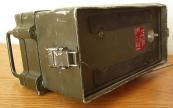

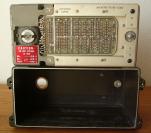
After loosening some captive screws, the unit can be hinged open to access the circuit cards. It’s designed such that it would be quite difficult to hinge it open like this without tripping the zeroizing mechanism. Note that a few circuit cards are missing. They were most likely removed in order to demilitarize the unit. I’m sure happy that just the cryptographic cards were removed rather than destroying the whole unit!

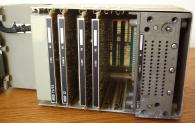
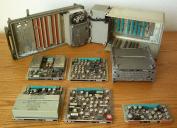
Removing the side cover from the electromechanical keying unit reveals the switch assembly and part of the zeroizing mechanism. In the third picture, the zeroizing mechanism has been cocked with two Allen wrenches (any long, slender, strong metal pins would suffice), and one of the switches has been partially depressed with a piece of wire. The switch will stay in this position until it is reset by the zeroizing mechanism.
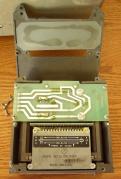
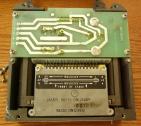
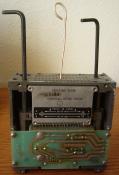
Removing the switch assembly lets us see the matrix of 64 slide switches and the bars which allow them to be reset by the zeroizing mechanism. The rest of the zeroizing mechanism is now visible, including the solenoid which allows remote electrical zeroizing.
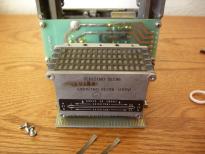
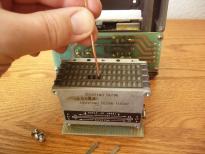
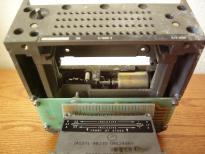
Movies
These movies show the operation of the zeroizing mechanism and the keying switch assembly. They are each provided in both Quicktime (*.mov) and Windows (*.wmv) formats.
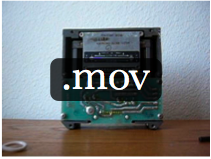
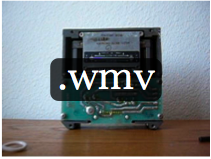
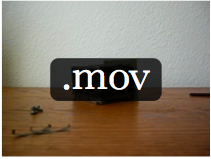
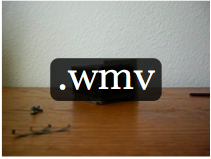
Hi Mark
Great site! I’m rebuilding a Vietnam-veteran Cessna and am in need of a de-milled KY-38 to accompany a PRC-77 set in the back seat. Can you advise where you got your KY-38 from so I might also chase one.
Regards
Darryl Hill
Well, I found it on eBay many years ago. Since then, I found another one from a private collector, so maybe a trade could be arranged? Are you restoring a Bird Dog? If so, I think those are cool.
I used one of these in the field in 1968 in Vietnam when they were first introduced and they worked OK but after some use they became unreliable. The “gun”, as we called it, used to set the code, was fragile and normal use in the field negatively affected it. The KY-38 was heavy, too, and required two batteries and that added to the weight. The connecting cable was cumbersome and not easy to carry. I know the army had a pack frame where one soldier carried both a PRC-77 and a KY-38 and if they actually did that he really carried a load. I was in the Marine Corps and we split the load between three men, one with the radio, one with the crypto unit, and one with the cable and spare batteries. We stopped using the KY-38 when the field trial was concluded, returned them, but kept the PRC-77 radios. I remember the units, both radio and crypto unit, were stencilled on the side with the letters XSVOT in yellow. I think I may have a photo or two of us using the units.